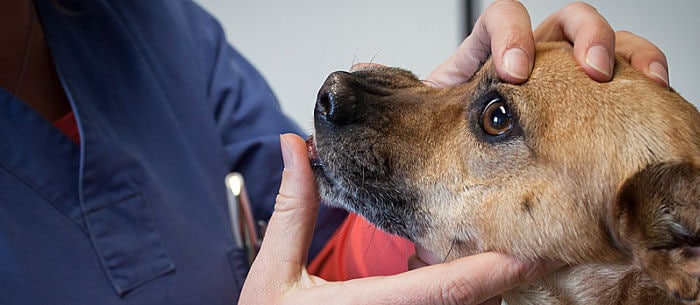You know when your teeth feel grungy. Even though you may be tired, you whip out your toothbrush for a few minutes, twice a day. But do you do the same for your dog?
Proper — and regular — dog teeth cleaning is essential for your dog, especially when it comes to preventing gum disease, also known as periodontal disease. As with humans, effective dog teeth cleaning involves professional help. But you also need to regularly brush your dog’s teeth at home.
There is really no good substitute for daily brushing. We recommend that commercial dental products be used in conjunction with brushing — not in place of brushing — unless brushing your pet’s teeth is not something that is possible.
Of course, your vet can periodically do prophylactic cleanings, the best form of dental cleaning. The dogs are anesthetised, and the teeth are scaled with an ultrasonic scaler and then polished, equating it to a person’s dental visit. But you still need to help keep your dog’s teeth clean in between visits. Here’s how to proceed.
How to Brush Your Dog’s Teeth
Here’s a step-by-step guide to setting up a great canine teeth cleaning regimen for your dog at home:
- Make It Routine
Set aside time each day to brush your dog’s teeth. Build it into your routine. Make it a habit as soon as possible. It is important to start brushing your dog’s teeth when they are very young, even before they’ve lost their puppy teeth. - Get Your Gear
Choose a toothbrush with soft bristles and an angle that will allow you easy access to the back teeth. A children’s soft toothbrush or a finger toothbrush will also work. If your dog refuses a toothbrush, using gauze wrapped around your finger. - Get Your Dog Used to Your Touching Their Teeth
Start by letting your pooch lick your fingers. Carefully move your fingers around the dog’s teeth until he’s accustomed to having that area handled. - Brush the Side Teeth
Concentrate first on brushing the side teeth located under the upper lip. - Brush the Outer Surfaces
The entire outer surface of the tooth should be cleaned with a special focus on the gum line. use a circular motion with a toothbrush. - Brush the Inner Surface, If You Can
Try your best to get at the inside of your pooch’s teeth. If you find it impossible, concentrate on the buccal surface, or the part of the tooth that faces the outside of the mouth, which is often where the most tartar (or calculus), or hardened dental plaque, forms.
When To Get to the Vet
In addition to cleaning your dog’s teeth at home, your dog’s teeth be evaluated by a vet at least once year — or more if your pooch has a history of dental disease. If you’re cleaning your dog’s teeth and see yellow and brown discoloration on a tooth’s surface, it signifies hardened plaque and you should bring your pet to the vet. Other signs to watch for are smelly breath, abnormal (slower) eating, bleeding gums and pawing at the mouth, which could be signs of periodontal disease.
Different Products Available For Dog Dental Care
Here are some recommendations:
- Toothbrush
While there is a lot of variation, some of the easiest toothbrushes to use on dogs are those that are designed to fit around your finger. - Toothpaste:
You’ll find the task of brushing your dog’s teeth a lot easier if you find a flavour that is pleasing to them: such as poultry, meat, beef, seafood, malt and vanilla-mint flavours. - Dental Wipes:
If your dog doesn’t enjoy getting their teeth brushed, wipes are a gentler and easier alternative. - Dental Chews:
The great thing about dental chews is that, as far as your dog is concerned, they are treats – so you certainly won’t get any resistance. - Dental Diet Dog Food:
Look out for certain dog foods which are specifically designed to help teeth. - Water Additive:
You can even add two teaspoons of dog dental water to your pet’s drinking water each can help maintain oral health and freshen breath.
To prevent tooth fracture and wear, dogs should only be allowed to chew on dental-approved toys and chews. Avoid giving them hard bones or tennis balls to nosh on.
